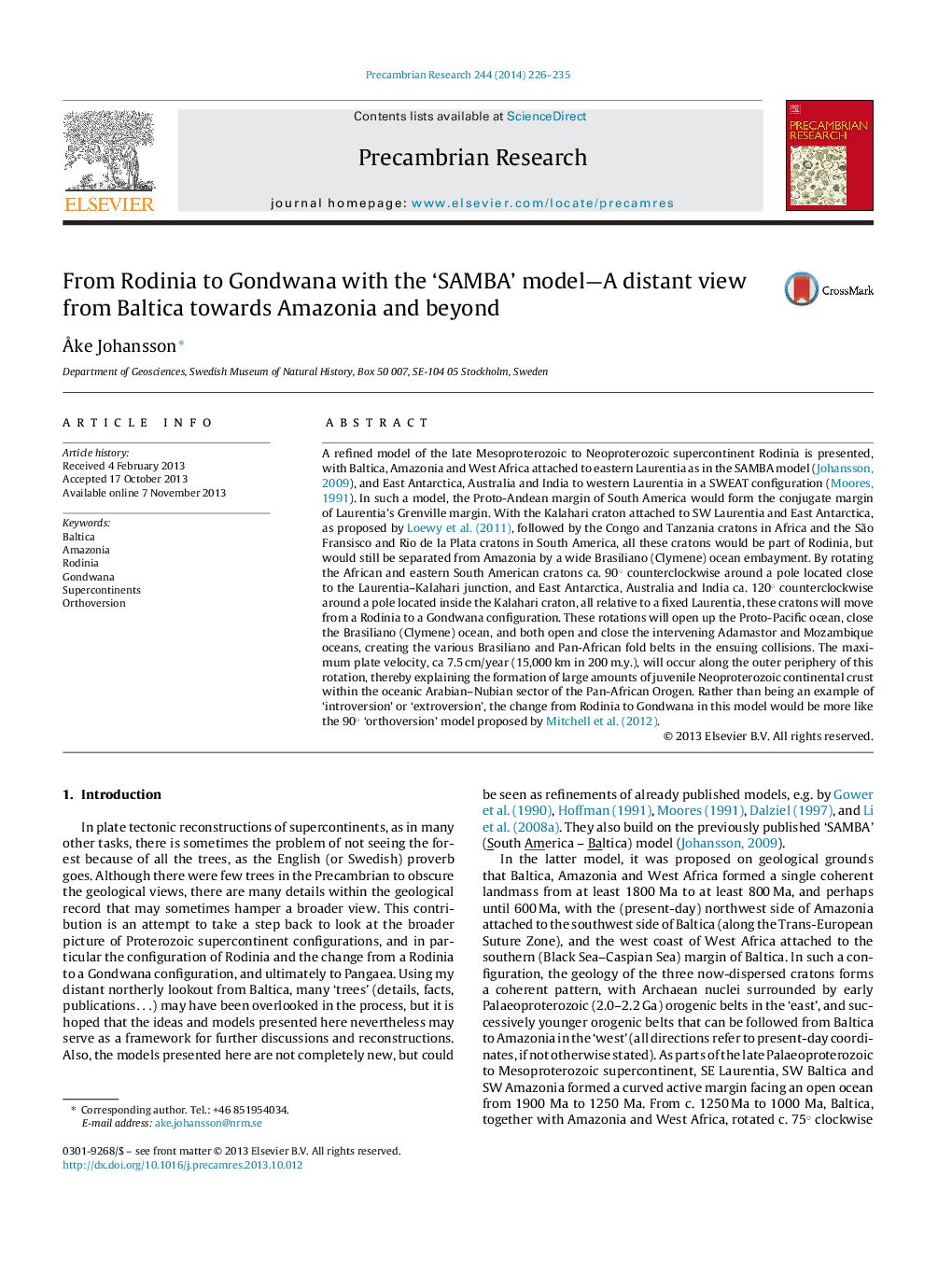| کد مقاله | کد نشریه | سال انتشار | مقاله انگلیسی | نسخه تمام متن |
|---|---|---|---|---|
| 4723050 | 1639630 | 2014 | 10 صفحه PDF | دانلود رایگان |

• Baltica and western South America formed the conjugate margin of Laurentia in Rodinia.
• E. South America and S. Africa may have been part of Rodinia but separated from Amazonia by a wide ocean embayment.
• They rotated ca 90° and E. Antarctica, Australia and India ca. 120° counterclockwise relative to Laurentia to form Gondwana.
• This rotation corresponds to a maximum distance of ca. 15,000 km in 200 m.y., equivalent to a plate speed of 7.5 cm/year.
• Most consumption of oceanic crust and formation of new continental crust would be in the Arabian–Nubian sector of Gondwana.
A refined model of the late Mesoproterozoic to Neoproterozoic supercontinent Rodinia is presented, with Baltica, Amazonia and West Africa attached to eastern Laurentia as in the SAMBA model (Johansson, 2009), and East Antarctica, Australia and India to western Laurentia in a SWEAT configuration (Moores, 1991). In such a model, the Proto-Andean margin of South America would form the conjugate margin of Laurentia's Grenville margin. With the Kalahari craton attached to SW Laurentia and East Antarctica, as proposed by Loewy et al. (2011), followed by the Congo and Tanzania cratons in Africa and the São Fransisco and Rio de la Plata cratons in South America, all these cratons would be part of Rodinia, but would still be separated from Amazonia by a wide Brasiliano (Clymene) ocean embayment. By rotating the African and eastern South American cratons ca. 90° counterclockwise around a pole located close to the Laurentia–Kalahari junction, and East Antarctica, Australia and India ca. 120° counterclockwise around a pole located inside the Kalahari craton, all relative to a fixed Laurentia, these cratons will move from a Rodinia to a Gondwana configuration. These rotations will open up the Proto-Pacific ocean, close the Brasiliano (Clymene) ocean, and both open and close the intervening Adamastor and Mozambique oceans, creating the various Brasiliano and Pan-African fold belts in the ensuing collisions. The maximum plate velocity, ca 7.5 cm/year (15,000 km in 200 m.y.), will occur along the outer periphery of this rotation, thereby explaining the formation of large amounts of juvenile Neoproterozoic continental crust within the oceanic Arabian–Nubian sector of the Pan-African Orogen. Rather than being an example of ‘introversion’ or ‘extroversion’, the change from Rodinia to Gondwana in this model would be more like the 90° ‘orthoversion’ model proposed by Mitchell et al. (2012).
Journal: Precambrian Research - Volume 244, May 2014, Pages 226–235